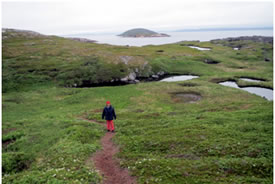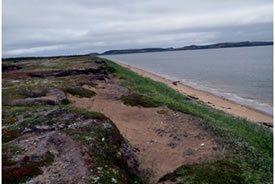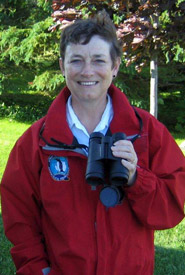Camping and birdwatching in Labrador

Battle Harbour, Labrador (Photo by Diane Griffin)
Rosemary Curley and I went to Labrador as her celebratory retirement trip this summer as she had just finished her last day as a biologist with the PEI Forests, Fish and Wildlife Division. We planned to camp, hike, birdwatch, fish, collect butterflies and generally act as tourists during our two-week journey.
In preparation, I bought a camp stove and Rosemary invested in a pop-up tent. Value Village was a great location to buy pots and camp dishes. Many people had told us to bring lots of “fly-dope,” as Labrador is known for its black flies in July. We loaded up Rosemary’s car with our gear and three times more food than needed. On our lips was our motto, “Labrador, here we come, ready or not, it shall be fun.”
We saw 80 different kinds of birds, which also included many from the west coast of Newfoundland. The most exciting was a spruce grouse and her three chicks at the Grande Hermine Campground, which is located east of Labrador City on the Trans-Labrador Highway. The birds stood stock still a few metres from us in the hopes that we would not see them since they were not moving. This presented a great opportunity to take photos.

Porcupine Strand, Labrador (Photo by Diane Griffin)
One thing on Rosemary’s “to see” list was the Porcupine Strand nine miles offshore near Cartwright. We booked a boat and guide (George with the Experience Labrador Boat Tours) and away we went to see the sand dunes. It proved to be a great opportunity to pass some “bird islands” and to see common eider, thick-billed murre and black guillemot.
While in Cartwright we engaged a local birder, Messy Shirley, to help us find birds, including Lincoln’s sparrow, merlin and Wilson’s warbler. It was fun to tour the town’s backyards, shoreline and graveyard with someone who knows the area.
By the way, we fished for northern pike without success but did invest money in the local economy by buying a supply of colorful lures, most of which remain snagged on rocks and logs in the ponds. Rosemary had better success by collecting some butterflies, which will be donated to The Rooms, the provincial museum for Newfoundland and Labrador.


